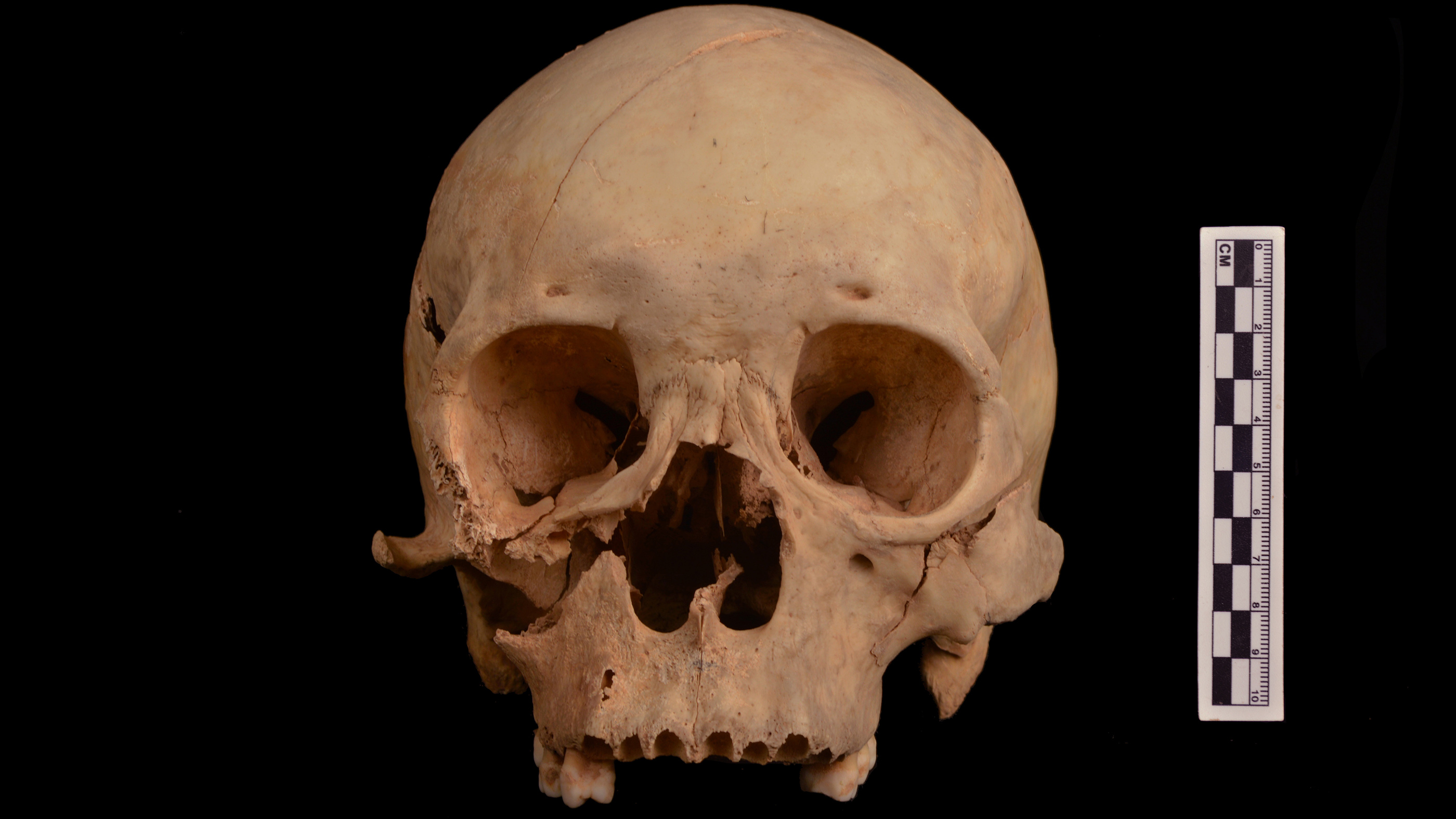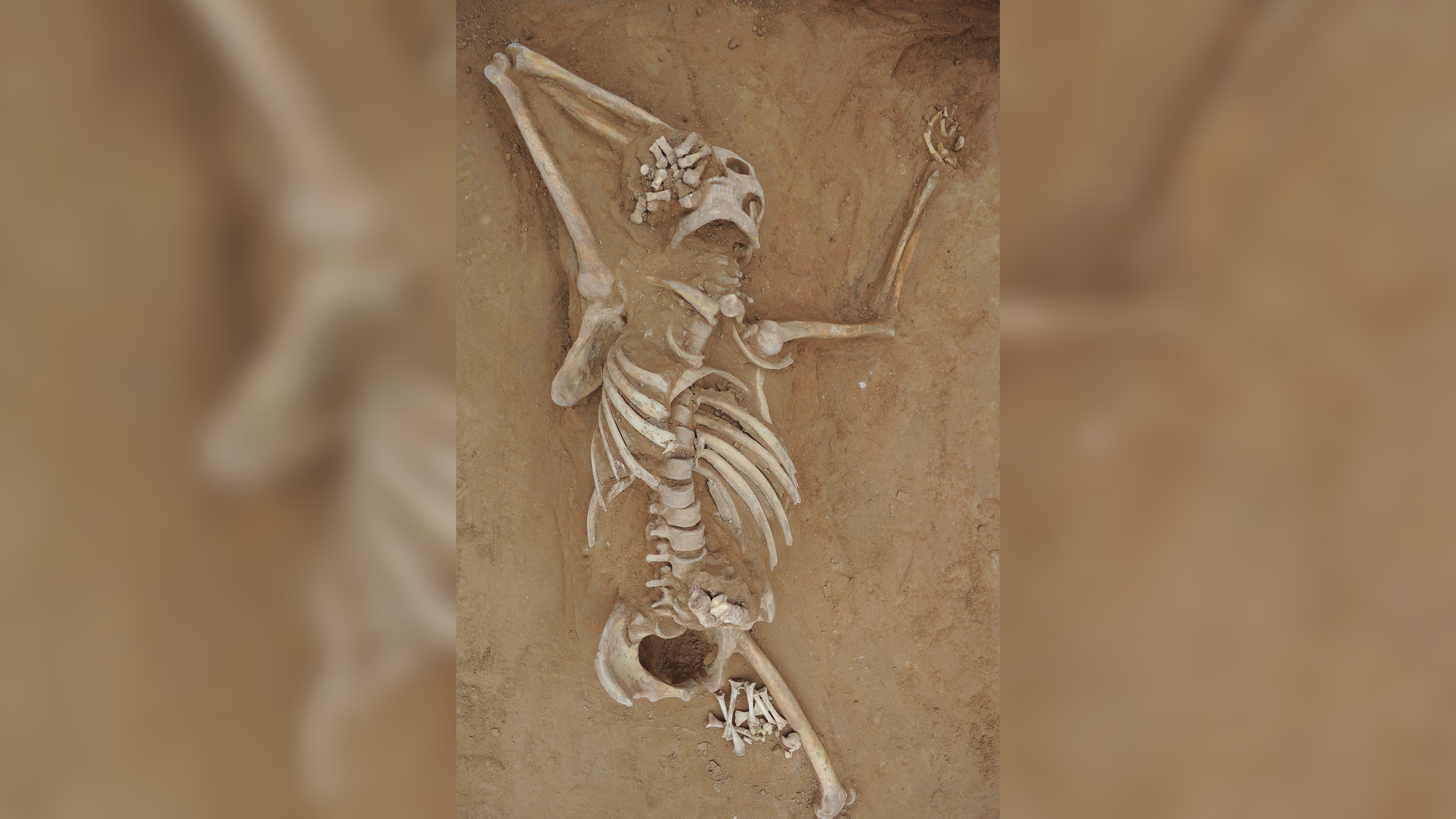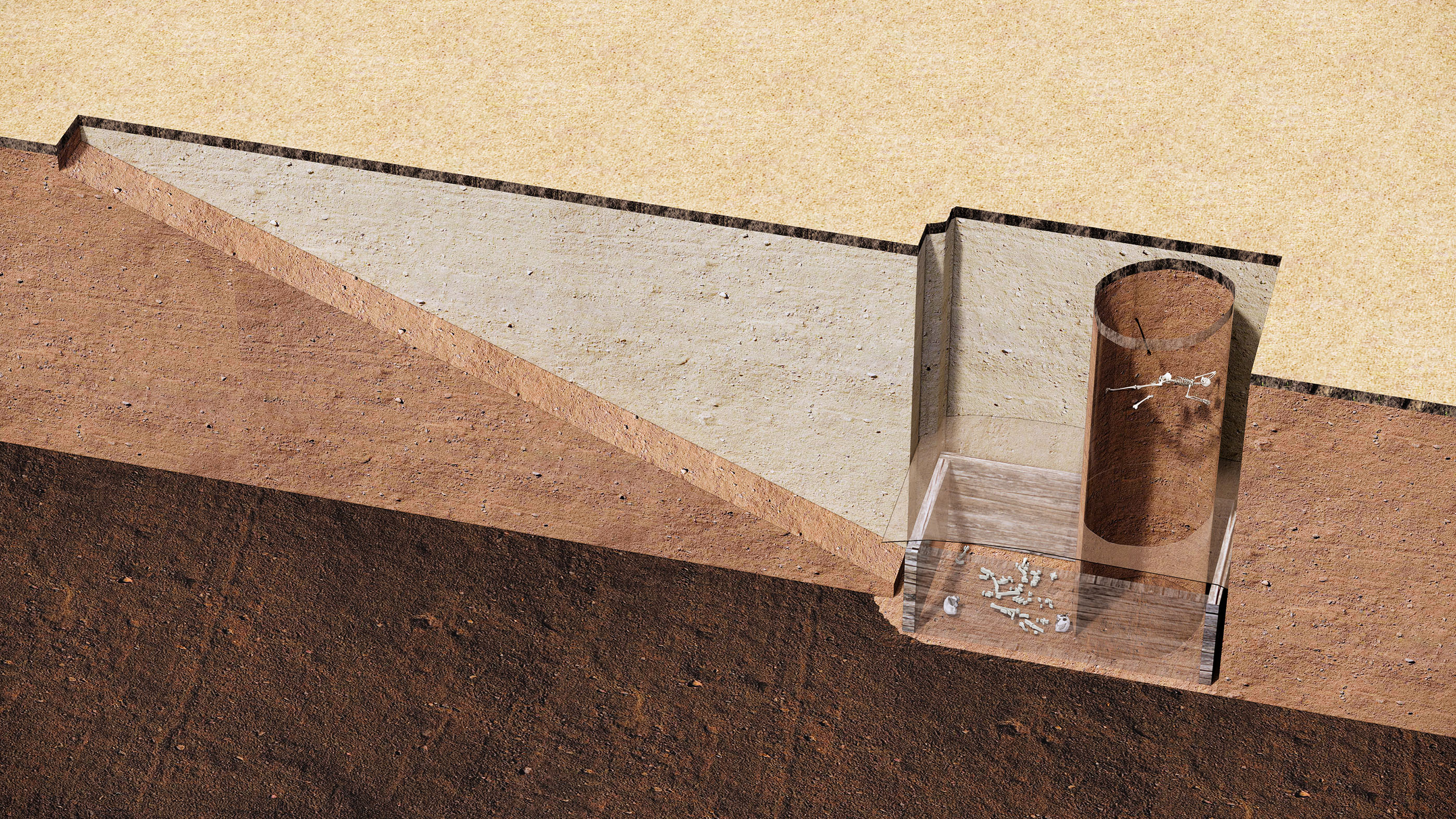1,300-year-old murder victim found in China was not a grave robber

The remains of an ancient 25-year-old man who was discovered in China in a shaft leading to an ancient tomb was not trying to rob it — he was murdered, archaeologists have found.
When the body was first discovered around 2010, above an ancient tomb that was built 700 years before he was killed, scientists wondered whether the victim was a grave-robber who had died while attempting to raid the tomb. But a new study reveals he was likely murdered, and whoever murdered the man seems to have hidden his remains in a looters' shaft above the tomb in an attempt to conceal the crime.
In the new study, researchers used radiocarbon dating to show that the murdered man lived during the seventh century, whereas the people whose bodies were buried in the tomb date back around 2,000 years. They also found injuries suggesting he was slashed and cut numerous times on his front and back, and was therefore likely a murder victim. A sword — possibly the murder weapon — was found near the body.
Related: The 6 most gruesome grave robberies



"The case indicates that the strategy of hiding victims' bodies in existing tombs or graveyards as a means of disposal, akin to 'hiding a leaf in the forest,' has been practiced since antiquity," wrote a team of researchers in an article published in the journal Archaeological and Anthropological Sciences.
Hiding the crime
Construction workers discovered the cemetery — which holds about a dozen tombs — in 2002 during the construction of a gas pipeline. Archaeologists excavated the site in 2009 and 2011, finding about a dozen tombs as well as the murder victim in the looters shaft.
The 2,000-year-old tomb contains three people: an adult male, an adult female and a juvenile of unknown gender. They were likely a family, and given the size of the tomb — the burial chamber is 194 square feet (18 square meters) — they were likely wealthy.
Sign up for the Live Science daily newsletter now
Get the world’s most fascinating discoveries delivered straight to your inbox.
"The social status of the original occupants would be high," said lead study author Qian Wang, a professor of biomedical sciences at Texas A&M University's College of Dentistry.
Most of the grave artifacts were stolen in ancient times. "The grave goods must have been very rich, which led to a large-scale grave robbery evidenced by the large vertical robbery shaft," Wang told Live Science in an email.
In their journal article the researchers noted that there have been several cases of archaeologists finding the remains of tomb robbers killed during accidents while trying to rob a tomb.
The team, however, thinks it's unlikely that the murder victim was one of the tomb robbers. "We conclude with confidence that the [victim] was not part of the original robbery team based on the fact that the filling of the vertical robbery shaft is accumulated naturally, and the victim was found about 4.5 m [14.8 feet] above the floor of the burial chamber — which means it should be a significantly long time after the robbery," Wang told Live Science in an email.
Why this person was murdered is unclear. He had slash wounds on both his front and back, suggesting that multiple people may have murdered him, the researchers wrote. The researchers also aren't sure where the person was murdered, suggesting it's possible that he was killed near or inside the cemetery.
The cemetery is located in Shiyanzi village in the Ningxia region of China.
Originally published on Live Science.

Owen Jarus is a regular contributor to Live Science who writes about archaeology and humans' past. He has also written for The Independent (UK), The Canadian Press (CP) and The Associated Press (AP), among others. Owen has a bachelor of arts degree from the University of Toronto and a journalism degree from Ryerson University.









